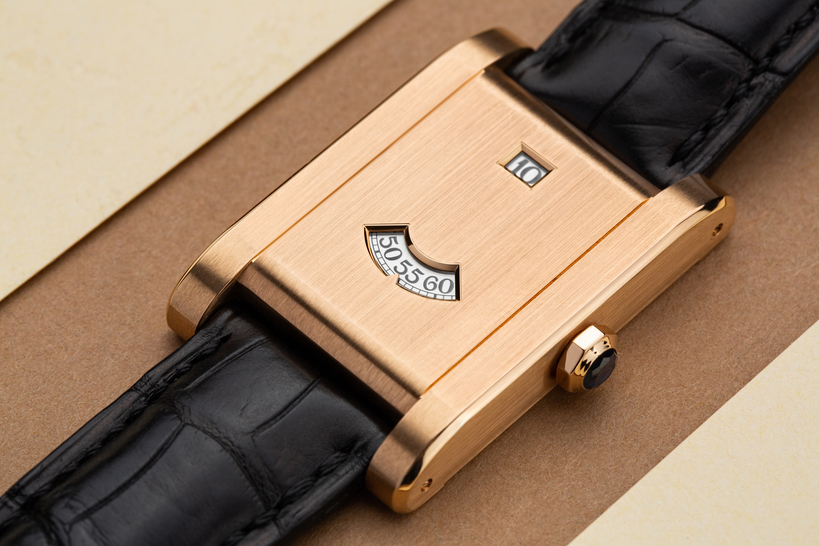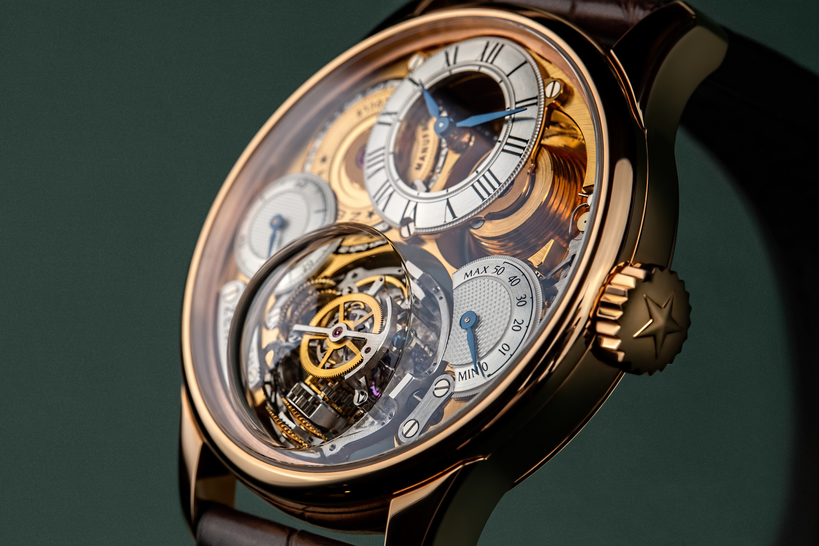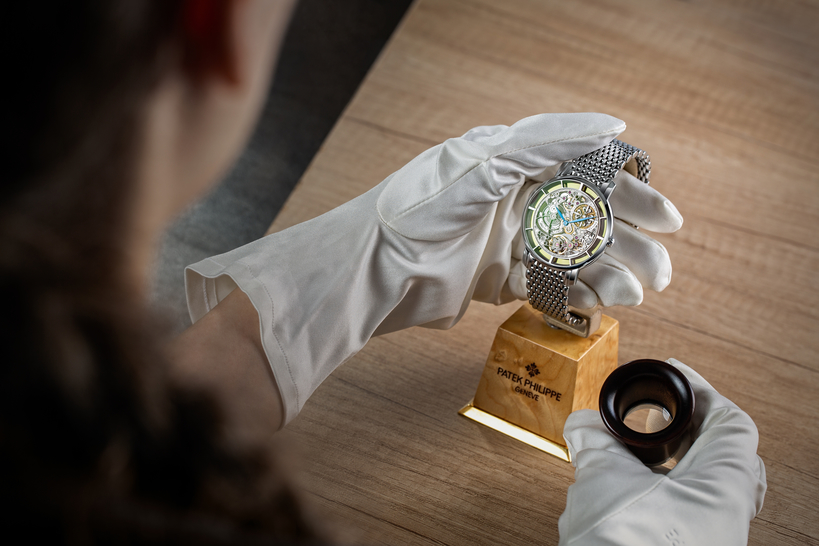The international watchmaking competition, the Grand Prix d'Horlogerie de Genève, has published the first list of entries vying for the title of watch of the year in a range of categories.
Changes have been made to the rules for this year's Grand Prix d'Horlogerie de Genève (GPHG). The biggest change is the addition of a new "Time Only" category, where watches with analog time indications of two or a maximum of three hands on their dials will complete.
Another award called the Eco-Innovation Prize has been added for the company that has launched the most sustainable timepiece. And this goes beyond cases and straps made of recycled materials. The category will also consider how precious metals and stones are sourced and manufactured.
The Genevan awards show wants to encourage companies to manufacture watches using the likes of ethically sourced gold or diamonds, extracted without using any child labor from mines that aren't located in countries where wars are being fought over the right to exploit these resources.
This captures the general zeitgeist, as concern for sustainability grows. And besides, why not use this prize to highlight the merits of one of the large watch and jewelry companies that hasn't been able to secure a prize in one of the other main categories like the Jewelry Watch Prize?
Another change has been made to the price bracket for the Petite Aiguille category, where now only watches ranging from CHF 3,000 to CHF 10,000 can be nominated, while the Challenge category has been reserved for watches that retail for up to CHF 3,000.
As a result, the GPHG now has 15 categories and 20 awards to recognize the best of watchmaking in and across categories. For example, the separate Special Jury Prize will acknowledge the contribution to the development of haute horlogerie made by a specific personality, institution or initiative (a specific model or brand can't be awarded this prize).
And while Patek Philippe, Rolex, Audemars Piguet, Girard-Perregaux, Swatch Group brands, and the majority of the Richemont brands may still be absent at the GPHG for various reasons, most notably Vacheron Constantin, Cartier and A. Lange & Söhne, there are still plenty of others. Let's do a quick run-through of the nominated gems in each of the categories.
LADIES’ WATCHES
Among the simpler watches for her, a model that definitely deserves to be foregrounded is the Van Cleef & Arpels Lady Arpels Jour Nuit (Ref. VCARPBLR00) from the Poetic Complications collection. Many are referring to it as a redesigned version of the 2008 model.
But that might offend the watchmakers at the legendary maison, who spent a whole three years developing the new Lady Arpels Jour Nuit. So the word "redesigned" should be swapped for the far more suitable word "reinvented" here.
The horizon over which the Moon and stars chase after the Sun in an eternal race stretches significantly further now, and the Moon almost meets the biggest star on the dial. The horizon is fashioned from sculpted mother-of-pearl, which has been painted blue and engraved with a pyramid-shaped guilloché pattern.
The sky is made of Murano aventurine glass, graced by a yellow-gold Sun disk and a white-gold, diamond-paved Moon disk. And the sky itself is a disk that makes one full revolution every 24 hours. Inside the 33-mm white-gold case with a bezel set with 44 diamonds is a self-winding movement that runs at a frequency of 4 Hz and has a power reserve of 36 hours.
The model is priced at CHF 86,500. Availability of the series is unlimited, but demand for pieces by Van Cleef & Arpels on the pre-owned watch market are gradually becoming phenomenal.
LADIES’ COMPLICATION WATCHES
Here we should pay close attention to another piece by Van Cleef & Arpels: the Poetic Complications Lady Arpels Brise d’Été (Ref. VCARPERU00). On this watch, time is indicated rather approximately (albeit for a.m. and p.m.) by yellow and blue butterflies.
They flutter along a 12-hour graduated scale, which starts where you'd normally find the 10 o'clock mark and stretches to the 4 o'clock mark. What makes this piece complicated is the fact that it has an automaton movement.
If you activate the pusher on the side at 8 o'clock, flowers and stems painted in champlevé и plique-à-jour enamel begin to sway as if brushed by a light breeze, which fits the name "Brise d’Été" (French for "Summer Breeze").
The model will appear in Van Cleef & Arpels boutiques in October and will retail for CHF 169,000. The fruit of a collaboration between the independent watchmaker Svend Andersen and the Singaporean collector Benjamin Chee is pretty neat too.
Andersen has his own company and Chee owns the watch workshop BCHH (Benjamin Chee Haute Horlogerie). So their world timer is called the Andersen Genève X BCHH Celestial Voyager Sakura. "Feminine" isn't the first word that springs to mind when you see the watch in its pink-gold case measuring 37.8 mm in diameter.
It taps into the unisex trend, and it would make perfectly suitable men's wristwear. What makes this piece complicated is its instantly recognizable, good old world-time indication. The complication was introduced 93 years ago in the Heures Universelles complication on a pocket watch by the famous watchmaker Louis Cottier, who worked with Patek Philippe.
This watch's most important feature can be found on the dial. This mother-of-pearl city ring encircles a disk measuring 18.3 mm with a miniature enamel painting that depicts a classic Japanese rural landscape.
Blooming cherry-blossom flowers and trees fill the foreground with a snow-capped Mount Fuji visible in the distance. The miniature painting was created using the cloisonné enamel technique.
Each of these miniatures is unique, as the painting couldn't even be copied if you really wanted to. So each of these 20 watches is a unique piece in a certain sense, and will cost CHF 59,800. By the way, the Sakura model is already the sixth in the Celestial Voyager series.
The partners came up with the pre-series three years ago and began fleshing it out in 2022. The Sakura joins two Sunset over Cappadocia editions, the Aurora, Arctic Sunrise and Supersonic. The model will go on sale in September.
TIME ONLY
In the new category for two- and three-hand watches, we recommend taking a closer look at two models. The first is the Bernhard Lederer Triple Certified Observatory Chronometer (Ref. 9012-COC). This is the most classic version and strict interpretation of the famous Central Impulse Chronometer with the revolutionary escapement that the ingenious watchmaker Bernhard Lederer invented and brought to life himself.
He managed to find and exquisitely execute an impressive solution to a problem that greats Abraham-Louis Breguet and George Daniels had both scratched their heads over. Lederer built two independent gear trains from two mainspring barrels, mounted two constant-force "remontoires" on them, and two détente escapement wheels with centrally aligned impulses.
Nevertheless, the movement is manually wound with a very unusual balance frequency of 12,600 vph (1.75 Hz) and has a power reserve of 40 hours. Observatories in Besançon (France), Glashütte (Germany), and the Swiss Observatory Chronométrique in Geneva have confirmed the exceptional timekeeping accuracy offered by the Central Impulse Chronometer.
By the way, the "Triple Certified Observatory Chronometer" in this model's name could be amended to "Quadruple Certified Observatory Chronometer" — Lederer put his watch to the test and received further chronometer certification from the COSC.
The Observatory version of the Central Impulse Chronometer will be released in a steel case measuring 44 mm in diameter and 12 mm in height. The model will go on sale at the end of August and will retail for CHF 156,600.
The second watch we recommend checking out is the Ming LW.01M Lightweight model. Watches by 37-year-old Ming Thein are just as interesting as the watchmaker himself.
Thein graduated from the University of Oxford at the age of 16, fit in a stint as an auditor at the major professional service network KPMG based in the Netherlands, and then went on to become the Chief of Strategy for the Swedish camera manufacturer Hasselblad. But Thein is far more renowned for being a great photographer, designer, and engineer.
He has extremely popular accounts on all social-media platforms. Thein, who has loved watches since his teens, began working with them when he co-founded his company Horologer MING in 2017. A great believer in minimalism and ultimate functionality, Thein even designed his own pieces in collaboration with Ochs und Junior of Ludwig Oechslin, who helped revive Ulysse Nardin and restore the grand maison's former glory.
Thein's watches turned out to be so stylish, refined and affordable that there are far more people who want to get their hands on them than the lucky few who have succeeded. They hardly ever resurface on the pre-owned watch market, i.e. current owners love wearing them and don't intend on selling.
All of this makes Thein's watches some of the most attractive for investment. When Thein created the present watch, he set himself the goal of a new world record for lightness. And he did it. While Richard Mille's record is 11.5 grams excluding the strap, the LW.01M model weighs a mere 8.8 grams.
After conducting a plethora of experiments with numerous carbon-fiber derivatives and even 3D-printing, Thein found that the lightest material available today is an alloy called AZ31 (Magnesium-Aluminum-Zinc-Manganese). It's lighter than carbon at 1.77g/cc compared to ~2g/cc density.
And this alloy has another couple of advantages which are of no small importance: it behaves consistently when creating various different items from it, while retaining the feel of metal (this is a very important factor for Thein and future watch owners alike). Thein took just as painstaking an approach to the search for a crystal material. And he found it!
He used a clear substance called Corning Gorilla Glass 6 via Knight Optical with an additional hardening treatment, which is almost half the weight of traditional synthetic sapphire while still boasting a solid hardness rating of 670 Vickers. In the re-engineered base ETA 2000 movement, almost all of the components have been removed or lightened. Even screws have been made from a material called PEEK composite.
Instead of axes and hands, the watch has a combined "dial" ring and movement holder shaped like a hat. The balance mechanism and the mainspring have been kept, which provide a 40-hour power reserve running at a frequency of 4 Hz. The 38-mm case made of the AZ31 alloy is even water-resistant up to 25 m. Availability of the series of lightest watches is limited to 200 pieces, each priced at CHF 19,500.
Credits provided by the manufacturers: www.vancleefarpels.com, www.andersen-geneve.ch, www.lederertimepieces.com, www.ming.watch and www.gphg.org

















